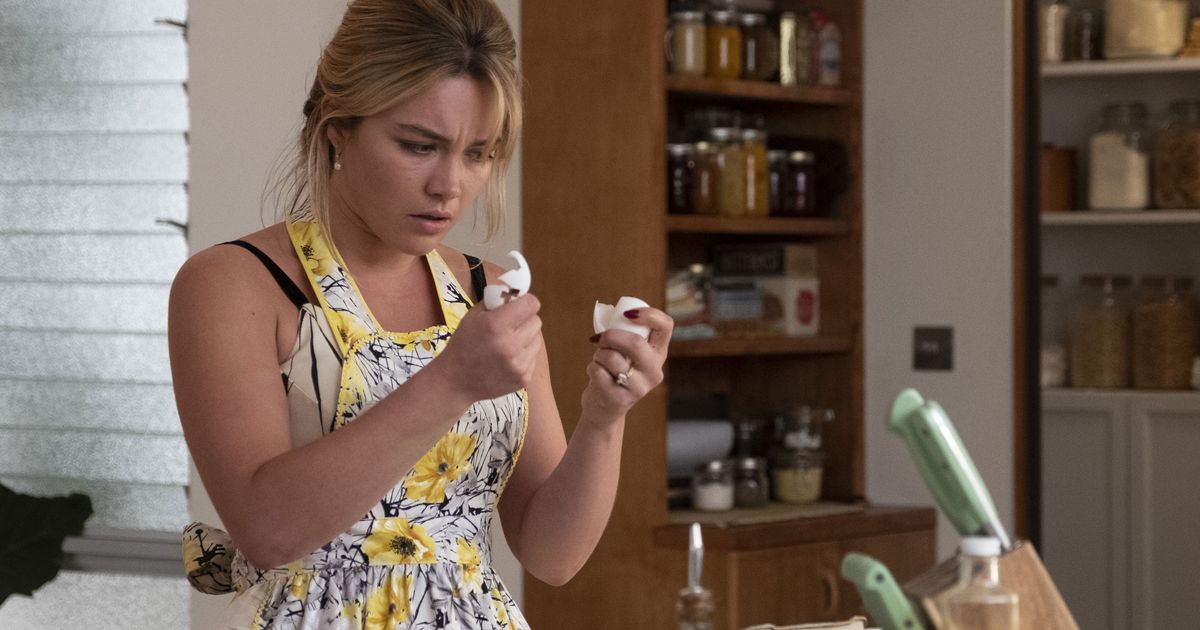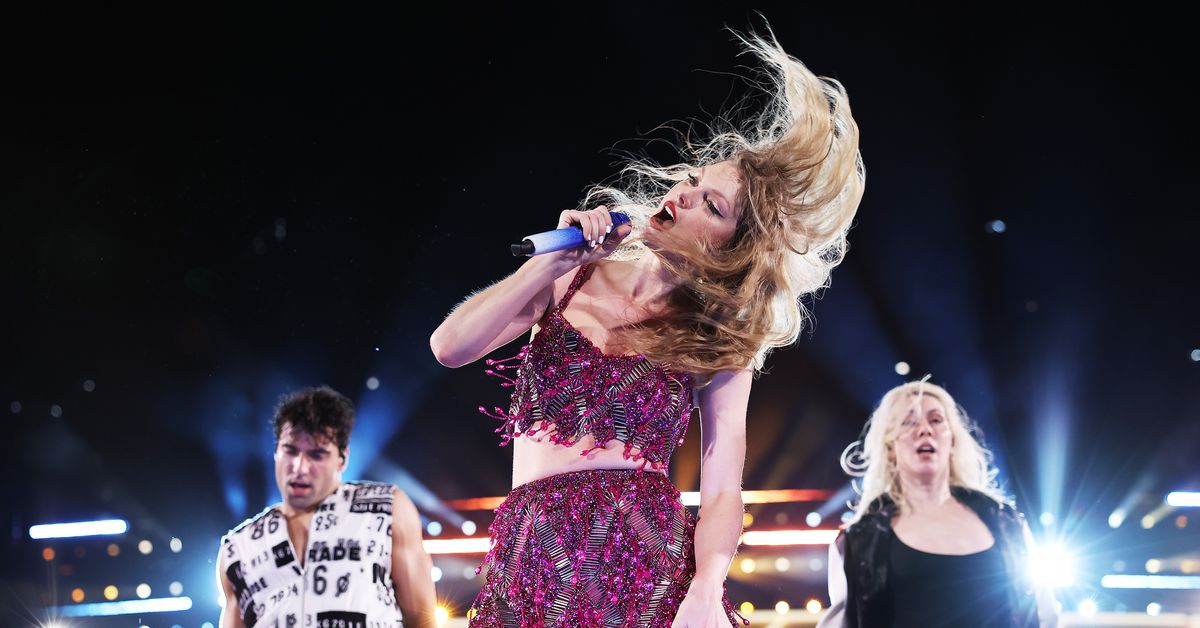
10 Unanswered Questions to Worry About After Seeing Don’t Worry Darling
Roxana Hadadi is a TV critic who also writes about film and pop culture, with the closed captions on and motion smoothing off.
Photo: Warner Bros. Pictures/Merrick Morton
Spoilers follow for the film Don’t Worry Darling.
At a certain point in criticism, one must put gossip aside and dig into a piece of work on its own merits. This past weekend, Olivia Wilde’s sophomore feature, the drama-plagued Don’t Worry Darling, finally hit theaters to mixed reviews, a $19 million box-office opening (right in line with early guesstimates), and a B- CinemaScore, raising questions about the film’s long-term legs. Perhaps the soft audience rating is because, as Vulture’s Bilge Ebiri wrote in his review, “Our minds have been fucked enough times that the modern mindfuck movie has lost much of its power to surprise, especially when it announces from its opening frames that it will be a mindfuck movie.”
A mindfuck can be a welcome, destabilizing thing, but Don’t Worry Darling is so obvious in its attempt to evoke one that its self-consciousness ends up being self-defeating. The film stars Florence Pugh and Harry Styles as married couple Alice and Jack, who seemingly live in the 1950s in a planned community plopped in the middle of the desert. While Jack works on “progressive materials” for the secretive Victory Project, Alice cooks, cleans, shops, socializes, and drinks with the other Victory Project wives who live in her cul-de-sac. But when Alice realizes something is deeply wrong with this place and with its leader, Frank (Chris Pine), Jack is unsympathetic. Their difference in opinion leads to a mid-film twist that attempts to mash together The Stepford Wives with movies like Strange Days, Get Out, and Serenity, plus some commentary on toxic masculinity.
The reveal is this: Everyone in Victory is living in a simulation designed by Frank, who in our real (present-day) world is an incel-like cult leader who has brainwashed men to pay him to live in a virtual-reality simulation of the 1950s. (Wilde has compared Frank to Jordan Peterson.) On the outside, those men have all abducted and restrained the women who appear in the Victory simulation. While the “husbands” are allowed to move in and out of virtual space so they can work and pay Frank, their “wives” are trapped — until the hair-bow-wearing Alice, like the one in Lewis Carroll’s Adventures in Wonderland, wakes up.
The twist doesn’t deliver much impact. Wilde and screenwriter Katie Silberman’s intentions — “It’s gaslighting, get it?” — are so clear from the beginning that the film never quite escapes the shadow of all that expectation. (At least the missing comma from the film’s title is innocent.) Along the way, Don’t Worry Darling unfurls a series of moments that make you go, “Wait, what?” In an attempt to parse the film’s half-baked interior logic and sparse character motivations, we’ve compiled a list of lingering questions. Like Alice running up that desert hill toward freedom or Spitgate conspiracy theorists, we are, in fact, still worrying.
1.
What’s up with the blood spot–single eye–dancing ladies montage?
In her promotion for Don’t Worry Darling, Wilde talked up the music cue that Styles, her current boyfriend, wrote in five minutes for a snippet of music that haunts Alice in the film. Alice can’t remember where she heard it, just as she can’t remember her life before coming to Victory, and in the film’s final minutes, it’s revealed that in the outside world, Jack used to sing it to his girlfriend, hardworking surgeon Alice, before he went all unshowered, unemployed, long-haired incel. He used the song to woo her and then to placate her, and it acts as a kind of hypnotic trigger to keep her in the simulation. Fine! But what never quite checks out is the montage of images that drives home how Alice is stuck in this virtual-reality world: a blood spot that looks like a Rorschach test, a single eye, and a group of dancing women in black and white whose legs moving in unison create a circular shape that evokes the aforementioned eye.
Don’t Worry Darling doesn’t have to lay everything out for us, but none of these images and ideas feels interconnected or revelatory. What is the purpose of the wives’ dance class? Why choose these three images as part of Alice’s brainwashing? Are the words intoned by Frank’s wife, Shelley (Gemma Chan) — “There is beauty in control. We move as one” — meant to evoke the Camazotz planet in A Wrinkle in Time, another Chris Pine movie, or am I reading too much into this? Put plainly: How does this film’s visual language complement its narrative? And that leads us to …
2.
What causes the glitches in the simulation?



Photo: Warner Bros. Pictures/Merrick Morton
See the banner behind Alice’s and Jack’s heads? Olivia, you’re wild for this one.
The Critics Newsletter
Sign up to get New York’s week in reviews.This site is protected by reCAPTCHA and the Google Privacy Policy and Terms of Service apply. Vox Media, LLC Terms and Privacy Notice
<
p aria-hidden=”true”>By submitting your email, you agree to our Terms and Privacy Notice and to receive email correspondence from us.










































































